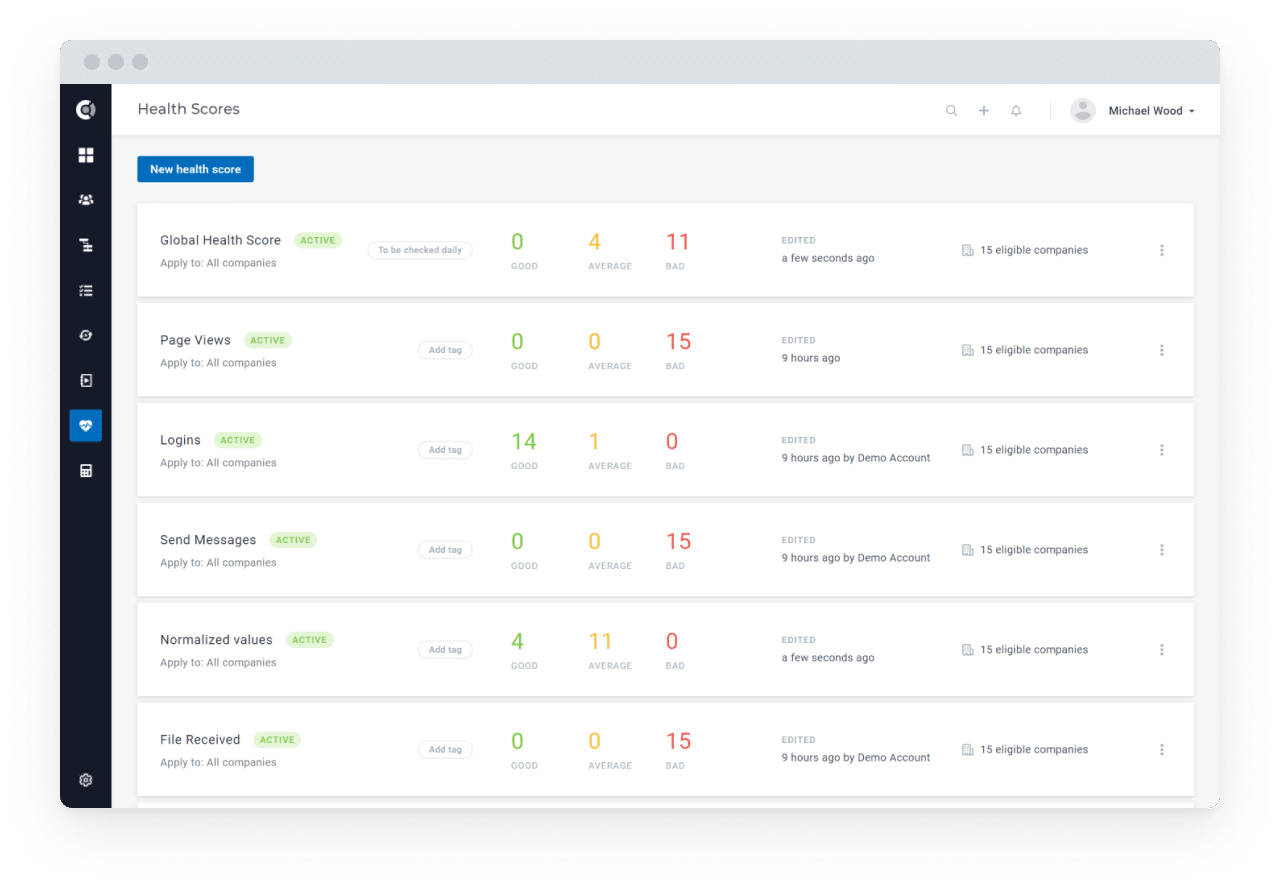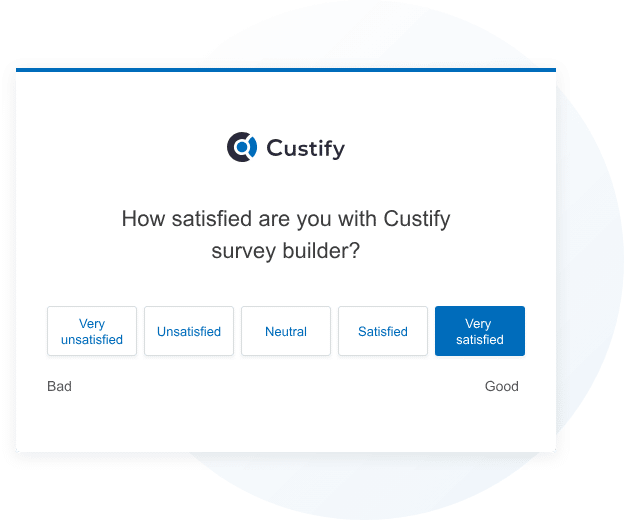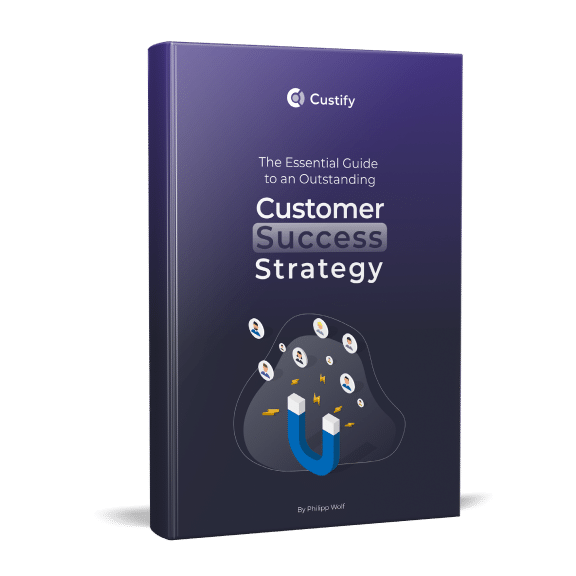Product-market fit (PMF) is the non-negotiable milestone of sustainable SaaS growth, but it’s also one of the most misunderstood targets.
Worse, even with a clear grasp of the concept, PMF remains elusive for many startups and even seasoned software companies. This often leads to the premature termination of SaaS startups trying their luck in the industry.
Case in point, let’s look at some statistics:

Data tells us that 10% of startups fail in the first year. This number doubles in the second year and balloons to 45% within five years.
While startup failures can happen for many reasons, such as poor marketing strategy, cash flow problems, and weak business plans, the most prominent is the lack of product-market fit, which accounts for 34% of all causes.

What does this tell us?
In the fast-moving world of SaaS, building a product is only half the battle. The real challenge is ensuring that the product consistently solves a pressing problem for a clearly defined market.
That’s where Customer Success (CS) teams play a mission-critical role.
In this article, we’ll explore what product-market fit really means in the SaaS landscape, how to measure it using the right metrics and signals, and how customer success platforms like Custify can help you achieve and sustain it.
We’ve glossed over its basic definition above, but what does it mean?
What is Product-Market Fit?
Product-market fit is a critical stage in the business where a product aligns with the needs of a well-defined audience. It marks the point when customers genuinely want, use, and recommend the product.
Customers jump on board because:
- It solves a longstanding problem that has remained unsolved. Example: Loom killed the “status-update meeting” by letting teams send quick screen videos.
- It addresses an issue customers didn’t even realize they had. Example: Calendly showed knowledge workers how much time they wasted on email scheduling.
- It provides a superior solution to a problem versus alternatives. Example: Figma enabled truly real-time collaboration vs. heavyweight desktop design tools.
With PMF, sales increase effortlessly, retention is high, and churn becomes low. Marketing feels more like amplifying existing momentum rather than forcing interest.
Five Core Metrics That Signal PMF
Product-market fit is not exactly a directly quantifiable concept. You can only measure and infer it using tangible indicators that reflect customer demand and business growth.
Here are a few key quantifiable metrics that signal PMF:
- Customer Retention Rate (CRR). This represents the percentage of customers who continue using the product over time. It shows long-term value and stickiness.
- Churn Rate. The percentage of customers who stop using your product within a specified period. Churn rate is the opposite of CRR. A lower value suggests a strong product-market fit.
- Net Promoter Score (NPS). This measures customer satisfaction and brand loyalty based on how likely users are to recommend your products or services.
- Daily/Weekly/Monthly Active Users (DAU/WAU/MAU). This metric shows the user base’s level of engagement. More active users represent a strong user-product alignment.
- Monthly Recurring Revenue (MRR): This represents the revenue generated from subscriptions. A linear (or exponential) growth in MRR means the company has steady growth and demand.
| Metric | Good Benchmark* | Why It Matters |
| Customer-Retention Rate | ▌90 %+ annual for SMB SaaS▐ | Shows long-term value “stickiness.” |
| Churn Rate | ▌< 5 % monthly for early-stage/ < 2 % for scaleups▐ | Low churn = product still “hurts” if removed. |
| Net Promoter Score | ▌40 + is strong in B2B SaaS▐ | Quantifies referral-level satisfaction. |
| DAU / MAU Stickiness | ▌> 20 % = healthy engagement▐ | Reveals habitual use. |
| MRR Growth Curve | ▌Consistent ≥ 10 % MoM in early stage▐ | Indicates compounding demand. |
*Benchmarks aggregated from OpenView SaaS benchmarks 2023 & KeyBanc SaaS survey.
Tracking these metrics can pinpoint when the company achieved PMF in its operational timeline.
In one of his pieces on product-market fit, Jason Cohen, the Chief Innovation Officer at WP Engine, once explained the “subjective experience” of reaching PMF in a business. He said it’s like a night-and-day transition from “how to get more customers” to “how to handle the surge in demand.”
Numerically, it’s easier to spot PMF when you plot quantifiable metrics in a graph.
Let’s take ConvertKit (yes, the email marketing software) as an example.
ConvertKit endured two years of meager $2,000 MRR until it achieved PMF. After PMF, the company enjoyed steady growth, even reaching over $1.7 million MRR as shown below:

Why is Product-Market Fit Important?
We can easily list the benefits of achieving product-market fitness.
Here are a few:
- Sustainable growth. No force in the world is stronger than “want.” When your product scratches your market’s itch, they will sign up, stick around, and even promote it inadvertently. That fuels long-term growth.
- Reduced customer churn. PMF means solving a real need. This means customers don’t leave, keeping customer churn low, and scaling easier.
- Lowering marketing and sales costs. Your market becomes your unpaid marketing and sales associates at PMF. They will sing your praises via word-of-mouth and referrals, initiating organic growth.
But given that not everybody responds well to positive reinforcement let’s explore why product-market fit is essential from a negative resonance.
Jevin Maltais once told Startups.co about his 2009 startup debacle. Over nine months, he spent over $60K to launch a “hyperlocal discovery app.”
The app would have shown everything happening within a three-block radius, like pictures, tweets, and events. But the market didn’t care.
This wasn’t just a case of product-market mismatch—he was trying to solve a problem nobody had. After 60 grand down the drain, he pulled the plug on the project.
“The fastest signal that PMF is slipping isn’t revenue—it’s behavior. When usage drops or health scores dip, our CS team treats it like a fire alarm and feeds the insight straight to Product. That closed loop is exactly how you prevent a Maltais-style misfire and keep building what customers actually need.”
Irina Vatafu, Head of Customer Success, Custify
This raises an important question: how do you find a product-market fit in your business? Keep reading.
5 Ways to Help You Find Product-Market Fit with Custify
Let’s get one thing straight: Custify doesn’t “find” product-market fit for you.
But the tool provides critical data, automation, and insights that can help SaaS companies iterate toward it.
Besides, you’re probably reading this article with an existing product. The key is optimizing that solution until it achieves product-market fitness.
If such is the case, generic recommendations like building a minimum viable product or screening MVPs with customers will not cut it.
Here, we’ll explore five ways Custify can help mold your existing product into the version that perfectly fits the market’s needs:
1. Monitor customer retention to fine-tune your PMF strategy
Customer retention is one of the clearest indicators of product-market fitness. If users are sticking around month after month, it means they are finding real value in your product.
Custify’s Customer 360 lets you see customer data at a glance. Here, you can track retention rates, user activity, and lifecycle stages in real-time. This helps you clearly see whether your product is resonating with the market.

When retention drops, Custify flags it early, allowing you to investigate and adjust. Also, you can oversee internal operations to ensure your team is aligned and responsive.
With these insights, spotting what works and what doesn’t becomes seamless.
2. Understand customer stickiness through usage behavior
Your most loyal customers hold the secret to that coveted PMF.
Custify allows you to identify your highest-value users. These are the ones who log in frequently, engage deeply, and expand their usage over time.
You can analyze their behavior patterns and feature usage to understand what parts of your product deliver the most value.
This can help you double down on what’s working and trim (or refine) what’s not.
Modeling future development or updates around the behaviors of power users lets you shape a product experience that aligns with actual demand, not assumptions.
For example:
Identify “sticky” accounts through DAU/MAU ratios. One Custify FinTech client spotted that users who created >3 dashboards in the first week retained 2.4× longer. They doubled-down on onboarding those actions—and ARR grew 18 % QoQ.
3. Turn churn signals into product insights
Without a proper customer success platform, people won’t feel the sting of the lack of PMF until after churn.
Custify gives users a sixth sense of customer problems through its Customer Health Scores.

Every risk of cancellation is a lesson in what your product might be missing. Using Signals, users can proactively address potential churn.
This gives you room to engage them with personalized messages or collect feedback. Conversely, you can dig into usage data to understand the root of their pain points.
Insights like these can lead to meaningful product changes, bringing you closer to PMF.
4. Get actionable customer insights to strengthen PMF
Real user feedback is the heartbeat of any product iteration.
After all, you’re building the product for the people, so it only stands to reason that what they say goes.
Custify lets you launch targeted surveys, such as NPS (Net Promoter Score) and CSAT (Customer Satisfaction Scores) feedback forms, directly within the customer journey. This gives you insight into your customer experience, which can help improve retention and minimize churn.

More importantly, customer feedback surveys reveal what customers like, what’s missing, and why they would (or would not) recommend your product.
Positive responses mean you’re moving closer to PMF. Meanwhile, critical feedback shows where to improve.
With Custify, you drop the guesswork and get actionable feedback from the people actively using your product.
5. Track PMF progress with a unified, comprehensive dashboard
The product itself is but one piece of the entire PMF puzzle. Your customers, team, and tech stack will all come into play in achieving product-market fit.
With that in mind, the visibility of all this data matters.
Custify unifies all your customer success data. This includes usage metrics, churn trends, health scores, and survey results, in one dashboard.
You can also watch team performance and activity, ensuring you cover all facets of the customer success journey.
This central view helps SaaS companies track product performance, customer satisfaction, and engagement without switching between tools.
With everything in one place, it’s easier for your team to build a product that meets real needs and evolves with user expectations.
Customer Success and Product-Market Fitness Go Hand-in-Hand
The path to PMF is an ongoing process, and customer success is pivotal in that journey.
How CS Accelerates PMF:
- Retention telemetry proves real-world value
- Behavior analytics spot friction early
- Feedback loops feed product roadmap
- Proactive outreach turns churn risk into upsell moments
Custify’s comprehensive platform makes this possible through data-driven insights that lead to smarter decisions and faster iterations.
Remember: success is not only measured by acquiring more customers. It is also achieved by keeping them happy and engaged.
Request a demo with Custify to see if they’re the right fit for your business.




